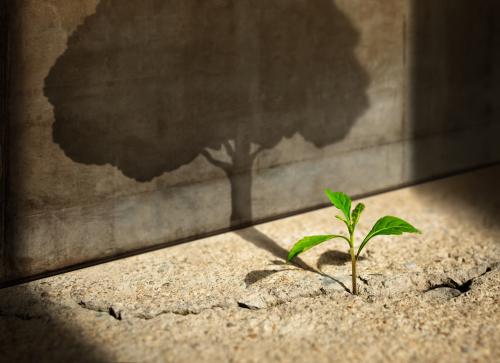The desperate situation in Pakistan is heart-rending. The United States has offered significant assistance, pledging now $150 million. This support is welcome. It will be even more welcome if it forms the start of a new aid relationship between Pakistan and the United States, one that recognizes the value of both humanitarian and development aid.
Such a fresh start should be based on two propositions: first, the hearts-and-minds of aid recipients will not be won over just by assistance to cope with natural disasters but rather by also helping long-term development; second, development assistance must be based on a significant, stable flow of resources.
The first point is general to all countries. There is certainly more to a long, stable friendship than helping during times of natural disaster. Better progress on development beforehand can be the most powerful prevention to widespread economic damage after a disaster and people will remember the mechanisms already in place to help them when trouble strikes.
The first priority after a disaster should be to assess the damage and needs of the afflicted. Many have written about the international community’s delayed response to Pakistan’s floods. However as the scope of the calamity becomes clear, international assistance has risen. According to the United Nations, almost $500 million has been received and a further $325 million has been promised.
Yet, little attention has been focused on why the flood and other natural hazards that have struck Pakistan have done so much damage. Pakistan has suffered from earthquakes, droughts and floods in recent years. In each case, the cost in terms of human life, suffering and material damage has been magnified by the country’s underdeveloped physical and social infrastructure. Previously, floods occurred in 1950, 1970, 1975, 1982, 1992 and 1993, washing away homes, crops, livestock, roads, schools and clinics. Mercifully, the extensive system of dams, embankments and canals—partly built with U.S. foreign assistance in the 1960s—has permitted some management of the downstream water flow, but this system was overwhelmed by the magnitude of the current flood.
Natural hazards become economic disasters when affected communities are isolated. In Pakistan, food prices have surged in cut-off areas, depleting household savings that would otherwise have been used to replace lost seed, cattle and other assets of agrarian livelihoods. Better infrastructure, risk insurance and social safety net programs (like the Benazir Income Support Program) would have helped, if they were currently in place. In other cases of severe hazards, negative medium-term development effects are felt through reduced agricultural growth, and higher poverty and inequality. Disasters elsewhere have been linked with growing external debt, budget deficits and inflation, which lower future growth. All these effects can be reduced through designing a program of foreign assistance support in a responsible way—strong rural development programs, including access to credit, rural roads, markets as well as sound macroeconomic management complemented by budgetary support.
The second point is that economic development assistance must be reliable, predictable and substantial to have an impact. Currently, U.S. aid to Pakistan displays none of these characteristics. The U.S. has periodically announced large aid packages for Pakistan and aid commitments have been high, albeit very volatile as shown in the chart below (see the red line). But actual U.S. development assistance to Pakistan has been minimal since the large aid programs of the 1960s and early 1970s (the hey-day of the U.S.-Pakistan relationship). At that time, U.S. development assistance helped build roads, power stations and a vibrant agricultural economy. Since then, Pakistan has seen little cash for development projects from the United States. In some cases, pledges were never translated into actual projects or were left unimplemented and later simply cancelled or forgotten. In other instances, the money never went to Pakistan or Pakistanis, but went straight to U.S. contractors to execute programs designed by the United States. In fact, the actual programmable cash-flow from the U.S. to Pakistan—gross aid disbursements excluding technical cooperation (where no money flows to Pakistan), food and humanitarian assistance (not designed for long-term development purposes), debt relief (write-offs on bad commercial loans that would not have been repaid anyway), and interest and principal repayments on past aid—was negative for almost 25 years between 1975 and 2000 (see the blue line). This meant that more money was being paid from the Pakistan budget to the United States Treasury than vice-versa in these years. In 2008, the last year of fully reported data, the actual net disbursement of programmable money for development projects in Pakistan by the U.S. amounted to $204 million, or about $1.10 per Pakistani. Small wonder that very few Pakistanis believe that U.S. assistance has benefited them significantly over the last 40 years.
##1##
There is a chance now to build a stronger friendship between Pakistanis and the United States. The Enhanced Partnership with Pakistan Act of 2009 promises $7.5 billion of U.S. development assistance to Pakistan over five years, a level that would return U.S. aid to its real levels of the early 1960s and provide the basis for meaningful support. The challenge will be to translate these pledges into real resource flows for Pakistan and to do so in a way that helps build real development, as was done in the 1960s. A starting point would be to develop a transparent local process within Pakistan for prioritizing and monitoring aid. If that were to happen, the floods could be a turning point for Pakistan—but for the better, not for the worse.
The Brookings Institution is committed to quality, independence, and impact.
We are supported by a diverse array of funders. In line with our values and policies, each Brookings publication represents the sole views of its author(s).



Commentary
Op-edU.S. Aid to Pakistan: Time for a New Approach
August 25, 2010